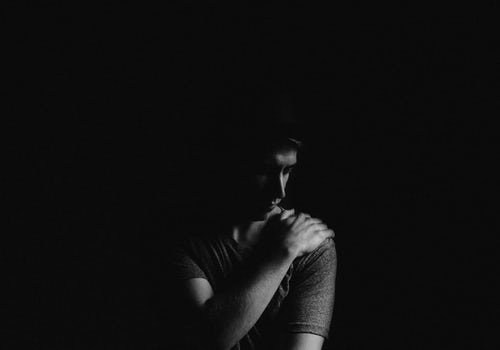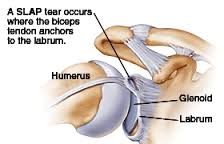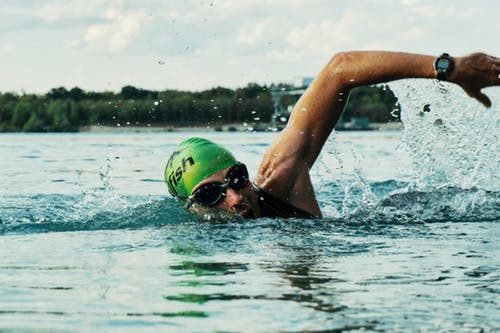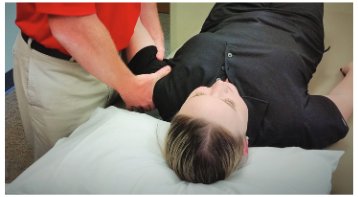nalco group
bone, muscle & joint pain physio
BOOK NOW / WHATSAPP ABOUT YOUR PAIN OR INJURY
- ORCHARD 400 Orchard Road #12-12 Singapore 238875
- TAMPINES 9 Tampines Grande #01-20 Singapore 528735
- SERANGOON 265 Serangoon Central Drive #04-269 Singapore 550265
Home > Blog > Physiotherapy > Conditions > Shoulder Pain > Left Shoulder Pain > SLAP Tear Shoulder Pain Physiotherapy
SLAP Tear Shoulder Pain Physiotherapy

A SLAP tear happens when there is damage to the ring of cartilage on the socket of the shoulder joint (medically termed as the labrum or "labral").
SLAP tear is acronym for “superior labral anterior to posterior tear”, meaning a tear of the upper rim of the shoulder labrum from the front to the back.
Shoulder SLAP tears and injuries mostly happen from
- falls or
- from repetitive over-head movements such as swimming, throwing sports/activities or racquet sports like tennis
Typical symptoms of a shoulder SLAP tear lesion includes
- shoulder pain
- shoulder weakness
- shoulder instability and possibly
- a "catching/locking" sensation in the shoulder
Treatment usually involves medication and shoulder pain physical therapy, but in some cases, your shoulder surgeon may recommend corrective shoulder surgery.
first of all, What Is A SLAP Tear?

A SLAP tear occurs in our glenohumeral joint (shoulder joint, between the glenoid process and humerus).
Anatomically, this is where the top part of the arm bone (which is the head of humerus), which is shaped like a ball, fits into a socket on the front-side of the shoulder blade (which is the glenoid fossa).
Our shoulder socket is very shallow, to free up the shoulder to allow for lots of movement. To compensate for this and to improve the stability of the shoulder, there is a special ring of cartilage (medically known as the glenoid labrum), which helps to deepen the socket without restricting movement.
===============================
The glenoid labrum is reinforced by the tendons of various muscles of the shoulder.
With a SLAP tear, the top part of the glenoid labrum, which is reinforced by one of the biceps tendons, is torn. This top part of the labrum tears from away from the glenoid socket from front to back (anterior to posterior), often damaging the biceps tendon as well.
Types of Slap Tear
There are a number of different types of SLAP lesion, depending on the nature and severity of the injury. The four most common types are:
Type 1: Degeneration (wear and tear) where the edges of the labrum fray, but stay attached to the glenoid rim. Biceps tendon is unaffected
Type 2: The superior (top) part of the labrum and the biceps tendon are torn off the glenoid rim
Type 3: A bucket-handle tear of the labrum where part of the rim detaches forming a flap which can get caught in the joint, causing locking or catching sensations. The biceps tendon is unaffected
Type 4: A bucket handle tear of the superior glenoid labrum which extends into the biceps tendon
Type 1 and type 2 tears are the most common.
Slap tears can also be associated with a Bankart Lesion, where there is damage to the bottom part of the glenoid labrum, or a rotator cuff tear, damage to the shoulder muscles. You can find out more in the Bankart Lesion and Rotator Cuff tear sections.
Common Causes of slap shoulder pain and injuries
SLAP tears can develop suddenly through a one-off event, known as an
acute injury, or gradually from repetitive movements, known as a chronic
injury.
Acute SLAP Shoulder Injuries
Acute injuries tend to affect younger people, under the age of 40. They are typically caused by:
- A Fall: most commonly onto an outstretch hand
- RTA: especially if you have pushed through your outstretched arms to brace yourself from the impact
- Shoulder Dislocation: when the head of humerus pops out of the glenoid socket
- Lifting: picking up a heavy object
- Sports Injury: such as a tackle, especially when your arm is above your head, or pulling down through the arm
Chronic SLAP Shoulder Injuries

Chronic tears tend to occur in
people over the age of 40, and degeneration of the glenoid labrum is
often seen as part of the normal aging process. They are usually caused
by:
- Repetitive Movements: especially with the arm above the head such as throwing actions, racket sports or swimming
- Repetitive Heavy Lifting: which pulls down on the arm e.g. weight lifting
Symptoms of SLAP shoulder pain and Lesions
The common symptoms of a SLAP tear include:
- Pain: with shoulder movements or when lifting things above the head. It tends to be a dull ache, rather than a sharp pain
- Weakness: decreased strength in the upper arm
- Instability: it may feel as if the shoulder is going to “pop-out”. Often affects sleep as it can be difficult to get into a comfortable position as the shoulder drops slightly when lying on it due to the instability
- Difficulty Throwing: athletes may complain of a loss of strength and velocity (speed) when throwing
- Decreased Movement: range of motion at the shoulder may be reduced
- Catching Sensation: or a feeling of impingement (blocked movement) when moving the arm
Your doctor should be able to diagnose a SLAP tear from talking to you and examining your shoulder. He may also want to get x-rays or an MRI, often with contrast dye to get a clearer picture.
Treatment Options
Treatment will depend on the type of SLAP lesion and the associated
symptoms. Generally, conservative (i.e. non-surgical) treatment is
tried first and if this fails, surgery will be considered.
Non-Surgical Treatment
Conservative treatment for a SLAP lesion will likely include:
1) Medication: pain-relief and anti-inflammatories such as naproxen and ibuprofen
2) Rest: from aggravating activities
3) Physical Therapy: exercises to regain the strength, stability and movement of the shoulder, some of the shoulder physiotherapy that you may receive with our senior physiotherapists include:
- cold therapy
- heat therapy
- moist heat paraffin wax therapy
- radio-frequency Indiba physiotherapy to accelerate soft tissue healing
- joint mobilization
- stretching exercises
- strengthening exercises
- scar management
- hands on manipulation and mobilization (manual therapy)
- soft tissue management
- heat therapy and heat treatment and heat pack to relief tight muscles and joints
- ultrasound therapy to accelerate soft tissue healing
- exercise therapy
- acupuncture and/or dry needling
- deep tissue release
- and more

Surgery
If you are still having problems after three to six months of rehab,
SLAP repair surgery may be advised. This is usually done
arthroscopically (keyhole surgery). A small camera (arthroscope) is
inserted into the shoulder joint so the surgeon can see exactly what
damage has been done.
Surgical technique will depend on the type of tear. The surgeon will
debride (clean up) any frayed edges, and then either remove or reattach
and torn parts of the glenoid labrum. When reattaching torn
segments, anchors are inserted into the bone of the shoulder socket and
the torn glenoid labrum is sewn back together and held in the correct
place with sutures attached to the anchors.
Following surgery, you will need to wear a sling initially for a few weeks (including in bed) to allow the shoulder to heal. You will work with a physical therapist on a progressive rehab programme to regain the movement, strength and stability of your shoulder.
It usually takes 4-6 months to return fully to sports.
SLAP tear surgery is successful at reducing pain and instability and restoring function in most cases and complications are rare.
Reference Sources
